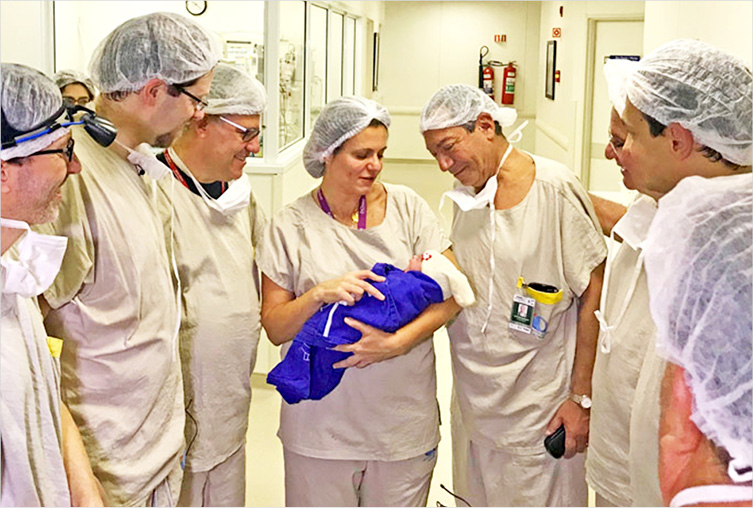First baby born via uterus transplant from dead donor
The first baby has been born following a uterus transplantation from a deceased donor, according to a case study from Brazil published in The Lancet. The study is also the first uterine transplantation in Latin America. The new findings demonstrate that uterus transplants from deceased donors are feasible and may open access for all women […]

The first baby has been born following a uterus transplantation from a deceased donor, according to a case study from Brazil published in The Lancet. The study is also the first uterine transplantation in Latin America.
The new findings demonstrate that uterus transplants from deceased donors are feasible and may open access for all women with uterine infertility, without the need for live donors.
However, the outcomes and effects of donations from live and deceased donors are yet to be compared. Techniques to the surgery and to suppress immune response to avoid organ rejection will be optimised in the future.
The recipient of the transplant was a patient with uterine infertility.
Only 10 other uterus transplants from deceased donors have been attempted in the USA, Czech Republic and Turkey, but this is the first to result in a livebirth.
The first childbirth following uterine transplantation from living donors occurred in Sweden in September 2013 and were also published in The Lancet.
In total, there have been 39 procedures of this kind, resulting in 11 livebirths so far.
“The use of deceased donors could greatly broaden access to this treatment, and our results provide proof-of-concept for a new option for women with uterine infertility.” says Dr Dani Ejzenberg, Hospital das Clínicas, Faculdade de Medicina da Universidade de São Paulo, who led the research.
“The first uterus transplants from live donors were a medical milestone, creating the possibility of childbirth for many infertile women with access to suitable donors and the needed medical facilities. However, the need for a live donor is a major limitation as donors are rare, typically being willing and eligible family members or close friends. The numbers of people willing and committed to donate organs upon their own deaths are far larger than those of live donors, offering a much wider potential donor population.”
The surgery took place in September 2016. The recipient of the uterus was a 32 year-old woman born without a uterus as a result of a condition.
She had one in-vitro fertilisation (IVF) cycle four months before transplant, resulting in eight fertilised eggs which were cryopreserved.
The donor was 45 years old and died from a stroke that involved bleeding on the surface of the brain.
The uterus was removed from the donor and then transplanted into the recipient in surgery lasting 10.5 hours.
The surgery involved connecting the donor uterus’ and recipient’s veins and arteries, ligaments, and vaginal canals.
After surgery, the recipient stayed in intensive care for two days, then spent six days on a specialised transplant ward. She received five drugs to suppress her immune response and prevent rejection, as well as antimicrobials, anti-blood clotting treatment and aspirin while in hospital.
Five months after transplantation, the uterus showed no signs of rejection, ultrasound scans showed no anomalies, and the recipient was having regular menstruation.
The fertilised eggs were implanted after seven months.
Ten days after implantation, the recipient was confirmed to be pregnant. Non-invasive prenatal testing was done at 10 weeks, showing a normal foetus, and ultrasound scans at 12 and 20 weeks revealed no foetal anomalies.
There were no issues during the recipient’s pregnancy, other than a kidney infection at 32 weeks which was treated with antibiotics in hospital.
The baby girl was born via caesarean section at 35 weeks and three days, and weighed 2.5kg.
The transplanted uterus was removed during the caesarean section and showed no anomalies.
Both the recipient and baby were discharged three days after birth, with an uneventful early follow-up.
